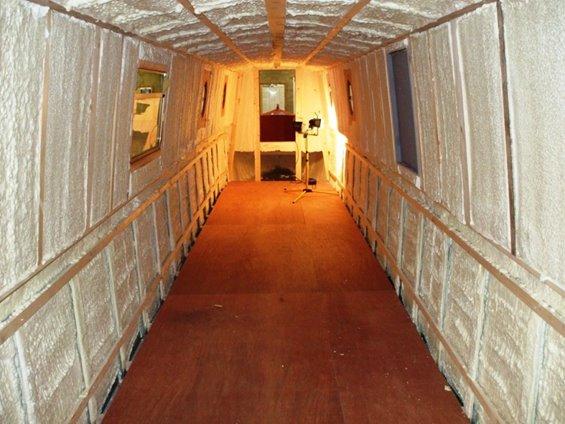
Published on: 11 January 2024

Important reminder on self-fit out and sailaway vessels and the need to CE/UKCA mark
Following on from British Marine’s recent successful Inland Conference, several members have asked for further clarification on when a vessel needs to be CE marked and what brokers should be doing to minimise the risk of selling second-hand vessels.
It is firstly important to understand the legislation of when a vessel needs to be CE/UKCA marked and what changes have been made through the different iterations of the RCD.
The RCD has been a regulatory requirement since 1998, and applies to all recreational craft between 2.5m and 24m in length. Any vessel falling into this category (with few exceptions) should have been certified, and as such, CE marked when first placed on the market. A slight change came into play with RCD 2 in 2018, that meant vessels needed to be fully certified and correctly marked when first placed on the market, or when first bought into service.
Partly completed craft still fall under the directive, but it’s recognised that these cannot be fully certified and as such must come with a declaration called an annex III (IIIa under the old directive) confirming they meet the directive as far as built. These vessels must then be fully certified when they are placed onto the market/brought into use. Further information on when a craft is complete/incomplete can be found below.
One exemption to the RCD and the need to CE mark the vessel is vessels ‘built for own use’, provided they are not put onto the market for a period of 5 years. As far back as at least 2008, the EU Commission’s CC guide has clarified ‘built for own use’ as needing to be predominantly built by the end user, purchasing materials on the open marketplace and only using specialists in certain aspects of the fitting out, such as electrical or electronic engineers.
Exclusion:
(vii) craft built for own use, provided that they are not subsequently placed on the community market during a period of five years.
The exclusion in article 1.2.(a)(vii) concerns craft built by their future user, provided that they are not placed on the market in the EEA within five years of being put into service. This does not preclude the sub-contracting, by the builder, of specialists in certain aspects of the fitting out of the boat e.g. electrical or electronic engineers.
NB: A member of the general public building his own boat (in his garage or garden, for example), from materials bought on the open market is deemed to be “building a boat for his own use”. This boat lies outside the scope of the Directive and does not require compliance with the essential requirements and thus CE marking. If, for whatever reason this situation changes, then the provisions detailed above would be seen to apply.
It should be made clear that a private person who enters into a contractual arrangement with a professional company, yard or individual constructor to build a one-off boat (bespoke), is deemed to have entered into an arrangement where there will be a transfer of ownership.
Such a boat is deemed to fall under the Directive and will have to comply with the Essential Requirements of the Directive and applicable conformity assessment procedures. Reference is made to text expanding on Article 4. Boats built for own use have the concept that a person is building their own boat and not having it built by others.
From the above, it can be seen if the end user has not sourced the materials and built the hull/shell of the vessel, it cannot apply the ‘built for own use’ clause, and the five year in service exemption to the RCD.
This means that if the vessel was bought as a shell (or ‘sailaway’ prior to a 2016 clarification further information and clarifications on sailaway are explained below), then prior to 2018 it should have been fully certified and correctly marked when it was first placed on the marketplace i.e. sold. After 2018 these craft should have been fully certified and correctly marked when first put into use.
To limit any risk or liability, brokers should always look for a CE/UKCA mark, CIN/WIN number on the transom, and if these items cannot be found it is highly likely the vessel is not legal and it cannot be certain that the vessel meets the minimum essential safety requirements laid out in the regulations. The only way to reduce the liability risk of these vessels is to get the owner to have a Post Construction Assessment (PCA) carried out by an approved/notified body before the broker takes the vessel on.
In the Inland sector, there was a popular type of vessel being sold as a sailaway, i.e. a vessel with engines, steering etc that was then to be fitted out by the end user. These were being sold as part complete craft with an annex III(A). British Marine on the request of industry back in 2016, sought further clarification on the correct status of these vessels. Trading standards concluded that if the vessel can be used (as a sailaway by definition can) it is a complete craft and must be fully certified not just supplied with an annex III (A).
RCD 2 from 2018 brought in one further important clause on major craft modification and the need to rectify the vessel via a PCA. This clause means if any major work is carried out on a recreational craft (which falls under the original directive/new directive), it must now be recertified using the PCA vessel after 2018. Although major modification is not clarified, it is our advice to industry that if the modification would effectively change the certification of the craft i.e. if it changes any of the essential safety requirements that the vessel was originally certified, then a PCA should be carried out. This, when used in conjunction with the trading standards clarification means that a sailaway should be fully certified when handed over from the boat yard and correctly marked as such. Then, after fit out, the vessel should then be recertified via a PCA before being put into service/placed on the market.
This means that all brokers, to minimise risk and liability of selling potentially illegal vessels, should be checking for a CE/UKCA mark, WIN number and asking the owner for a declaration that they have not modified the vessel since 2018. If the vessel is missing the CE/UKCA mark, WIN number or the owner declares they have modified the vessel in a way that could alter the original certification of the vessel, the broker should be asking the vessel owner to have a PCA carried out.
It should be noted that leaving the EU has not affected any of the above other than the vessels can now either be UKCA or CE marked.

